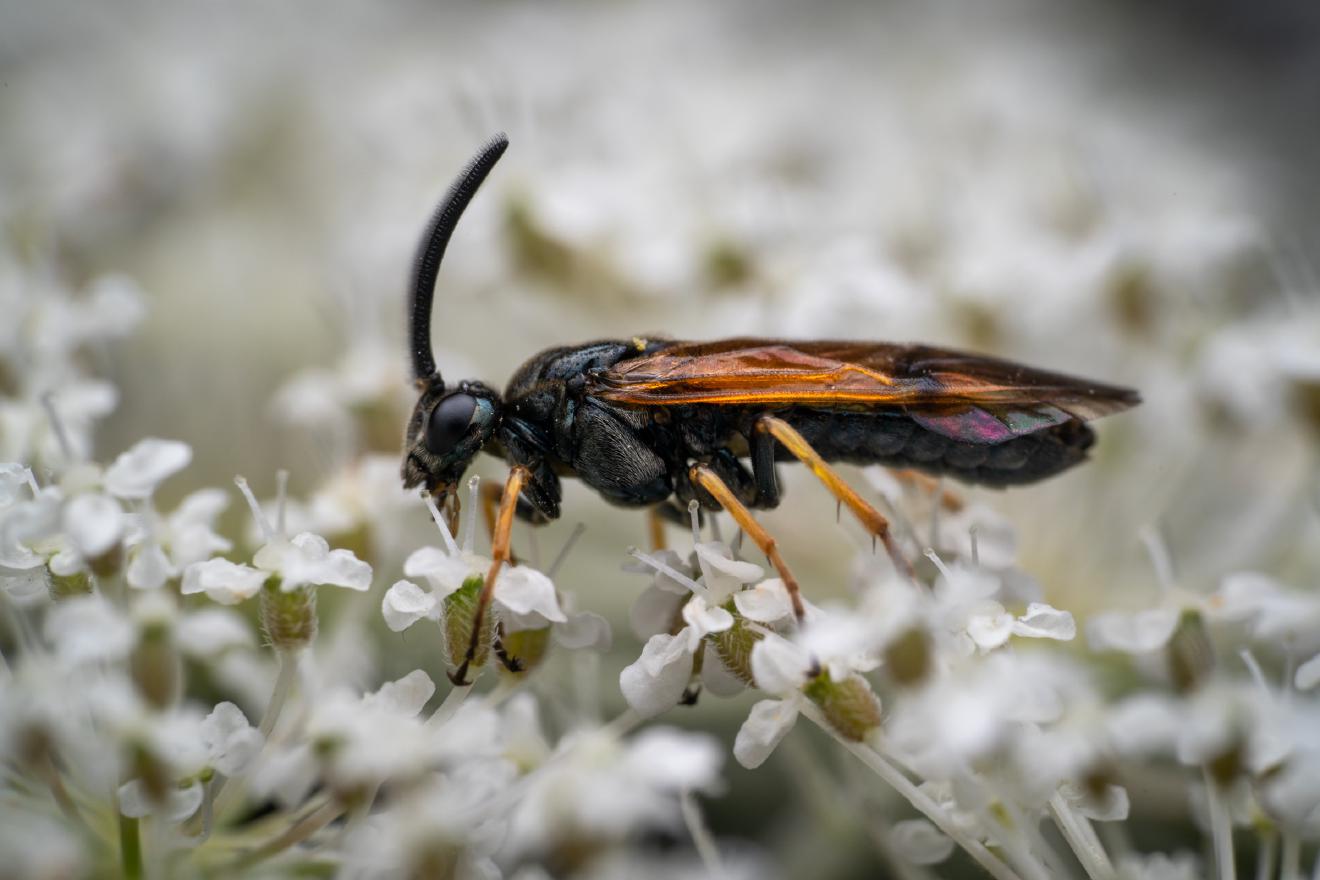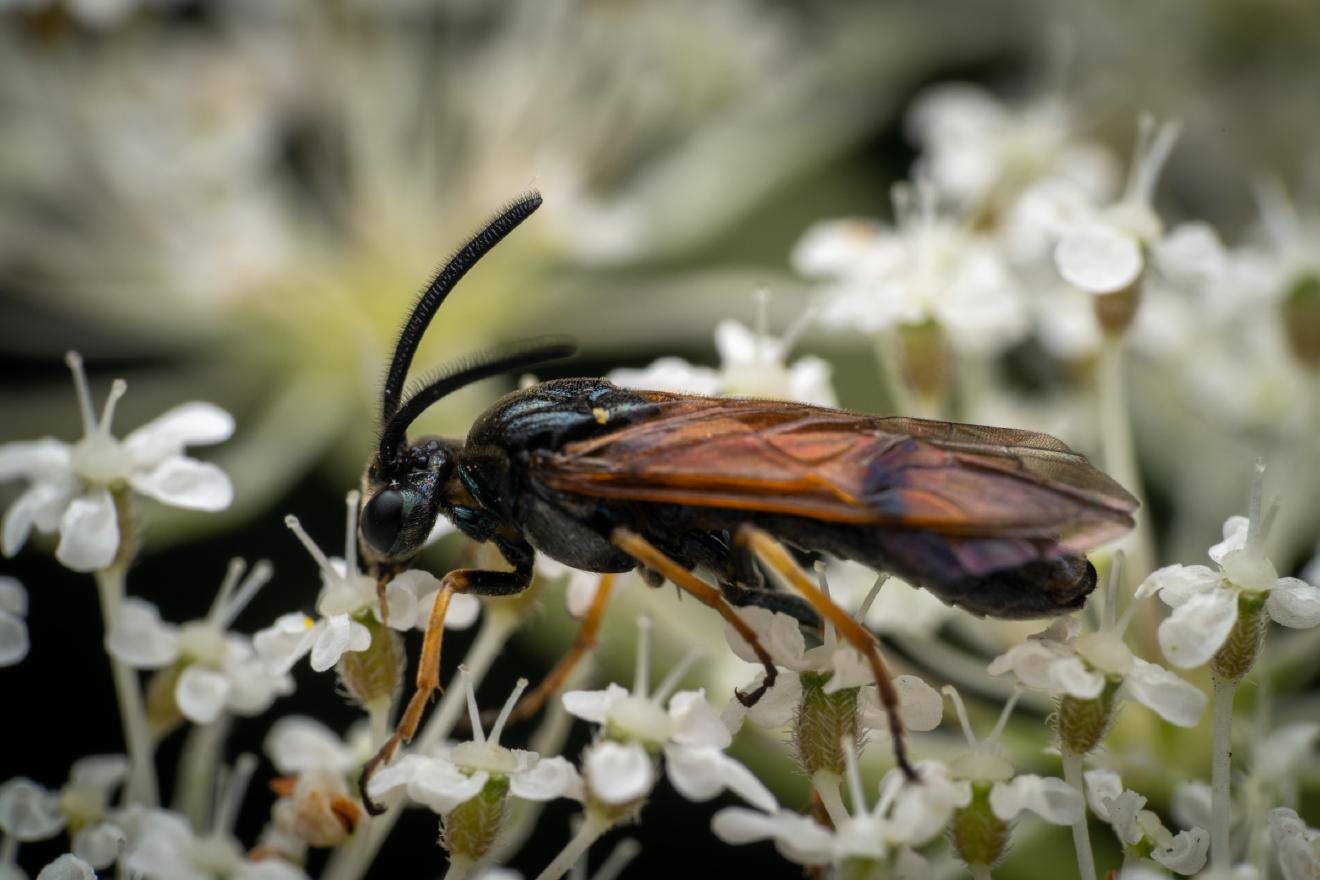Bramble Sawfly
species of suborder “Sawflies, Horntails, and Wood Wasps“
1 species
The Arge cyanocrocea sawfly is found in various regions including Europe, the Caucasus, Asia Minor, and Japan. They are about 7-8 millimeters long, with a black head and thorax, a yellowish orange abdomen, and reddish legs. These sawflies feed on pollen and nectar from various plant species, including Aegopodium podagraria, Meum athamanticum, Heracleum sphondylium, and more. The larvae resemble caterpillars but have five pairs of prolegs and feed on bramble leaves like blackberry, raspberry, and great burnet. For more information, visit Nature Spot.


Distribution#
These sawflies are present in most of Europe, in the Caucasus, in Asia Minor and in Japan.
Description#
The adults of Arge cyanocrocea grow up to 7–8 millimetres (0.28–0.31 in) long. As all sawflies, this species is related to wasps and not to flies, but lacks the typical wasp waist. Its head and thorax are black, while the abdomen is yellowish orange. Legs are reddish, with small black rings. The wings show a characteristic wide transverse dark band and gray apex. Arge cyanocrocea is rather similar to Arge pagana, that shows black wings.
Biology#
These sawflies can be encountered from May to July, feeding on pollen and nectar of several Apiaceae species (Aegopodium podagraria, Meum athamanticum, Heracleum sphondylium, etc.), Euphorbiaceae species (Euphorbia spp.) and Asteraceae species (Tanacetum vulgare).The larvae of this species look like caterpillars, but they have five pairs of prolegs, while caterpillars have four pairs. They feed on the leaves of brambles (hence the common name), mainly blackberry (Rubus fruticosus), raspberry (Rubus idaeus) and great burnet (Sanguisorba officinalis).
External links#
Nature Spot
The Arge cyanocrocea sawfly is found in various regions including Europe, the Caucasus, Asia Minor, and Japan. They are about 7-8 millimeters long, with a black head and thorax, a yellowish orange abdomen, and reddish legs. These sawflies feed on pollen and nectar from various plant species, including Aegopodium podagraria, Meum athamanticum, Heracleum sphondylium, and more. The larvae resemble caterpillars but have five pairs of prolegs and feed on bramble leaves like blackberry, raspberry, and great burnet. For more information, visit Nature Spot.
Ancestry Graph
Further Information
Copyright

